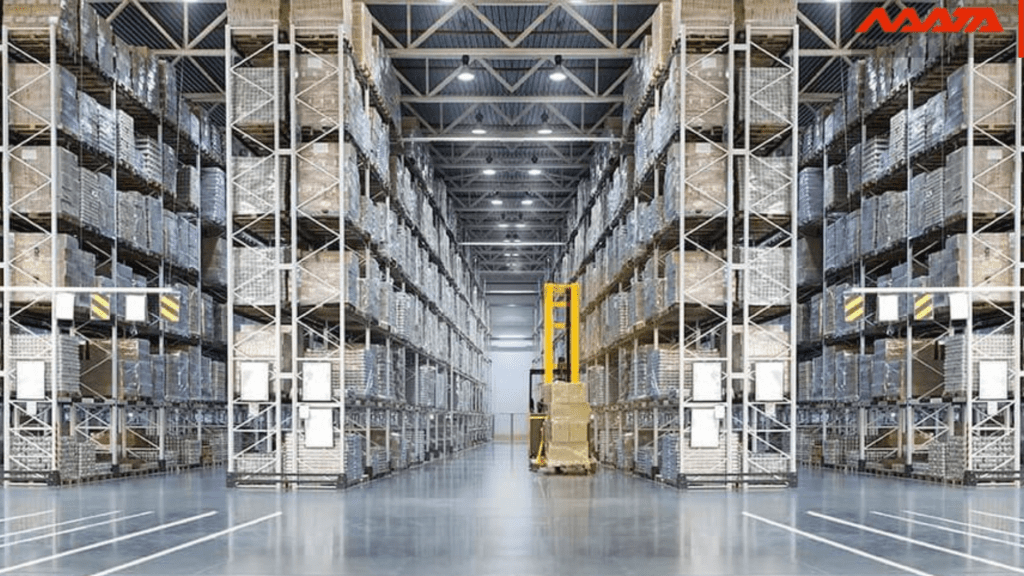Growth of The Warehousing Industry In India
Table of Contents
Growth of The Warehousing Industry in India
Since the year 2020, the Indian warehouse market has grown into an industry of INR 676 Billion. The sector is expected to grow even further in the upcoming years at a projected CAGR of 9.1% between the years 2021 and 2026.
Being a nodal step in the logistics value chain, warehousing is an integral part of the process. It is aimed at protecting the quality and quantity of the products which are not to be used in the near future and constitutes of storage of goods and merchandise of these products while they await their future use. It involves three major steps in the supply chain-collection, sorting and dissemination of goods.
In the recent years, the Indian warehousing sector has shown significant growth trajectory. This growth of the warehousing industry can be linked to various factors such as growth in major industrial sectors like food, automobiles, FMCG agriculture, pharmaceuticals; the emergence of organized retail; and lastly, country’s changing tax regime.
The GST regime, which was introduced in the country in 2017, acted as the first major stimulus for the sector. Pertaining to this, the growth in the sector increased from 35 million sq ft (MSF) during 2015-17 to 77 MSF over 2018-20. Ever since the Covid-19 pandemic came into picture, the industry has been growing at an accelerated pace. Today, it has become one of India’s biggest sunrise sectors and analysts are expecting it to reach newer heights in the next couple of years.

You May Also Like To Read: 7 Types of Warehousing and Concept of Warehousing
The Indian Boom
For the past few years, the Indian Warehousing industry has witnessed an unparalleled growth. The absolute absorption in the warehousing industry has increased from 13 million sq ft to 35 million sq ft between 2016 and 2020 according to JLL (Simply put, Absorption means “Area Sold or Leased”). The growth of the warehousing industry is expected to increase and according to Research and Markets, India’s warehousing market is expected to grow into $19.5 billion from $12.2 billion by 2025.
The introduction of the Goods and Services Tax Regime in 2017 has been the most important factor in the growth of the warehousing industry in India. The grant of the status of “infrastructure” to the logistics industry did wonders and acted as a catalyst for the warehousing market.
The primary application of warehouses in the country is in the agriculture sector. Warehousing is employed to store agricultural and non-agricultural consumer goods like pharmaceuticals, FMCG products, and all the white goods you order on Amazon, among others. The massive growth of the E-commerce sector has contributed significantly to the growth of the warehousing industry; however, the main factor continues to be the record foodgrain production in the last couple of years.
Formalization of businesses has become a general trend in the Indian warehousing sector. Consolidation of smaller warehouses, Shift from Unorganized to Organized warehousing, and increasing participation of international players, have all led to the rise of a monstrous industry in the Indian Economy. However, besides the recent growth, there is still scope for improvement as India is behind major economies in terms of per capita warehousing space.

You May Also Like To Read: Best 3pl Warehouse Service ? Benefits of 3PL Warehousing
COVID-19 Impact Analysis
The pandemic has turned the world upside down and every sector has been a cictim of its impact. The warehousing sector is no different as it witnessed a notable decline in its capacity utilization. With production coming to a halt, supply chain disruption getting disrupted, and restriction in international trade, the demand for warehousing fell by ~11% in the first quarter of 2020.
However, with the world returning to normal, the growth of the warehousing industry is again on boom. Today, it has become a promising market for investors. With the continuous growth of e-retail and e-commerce sectors and elevated demand for cold chain and pharmaceutical warehousing, the sector continues to prosper.




